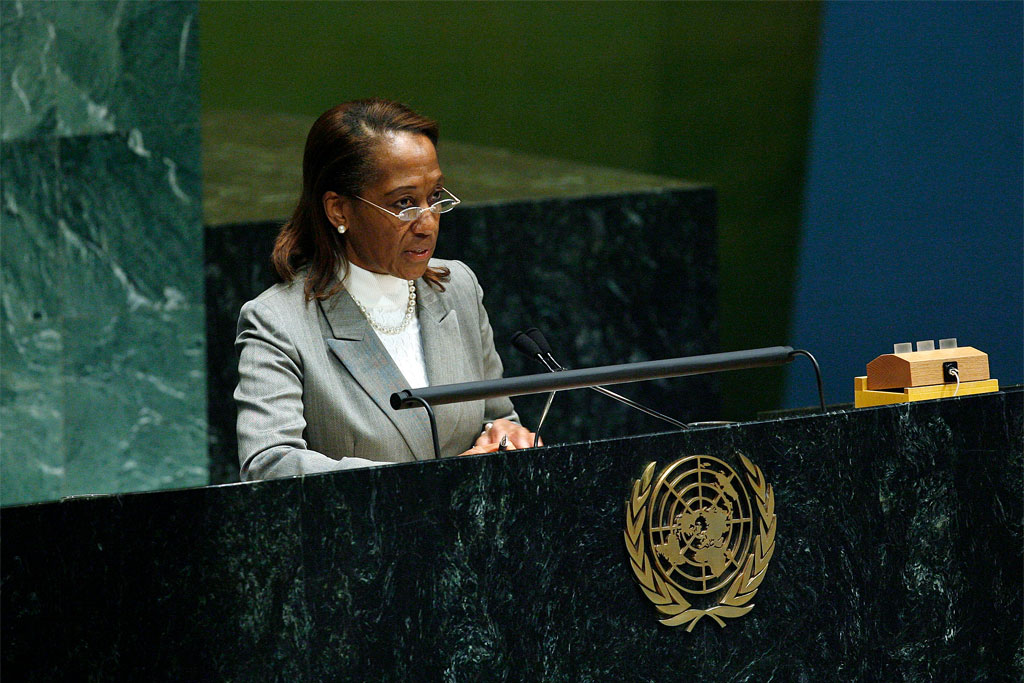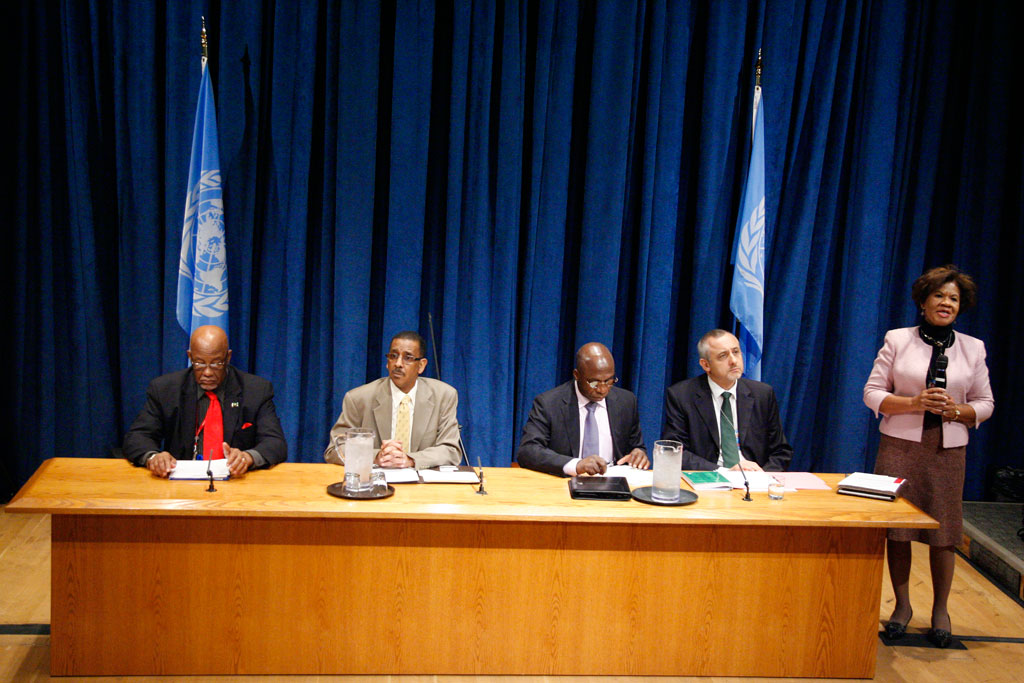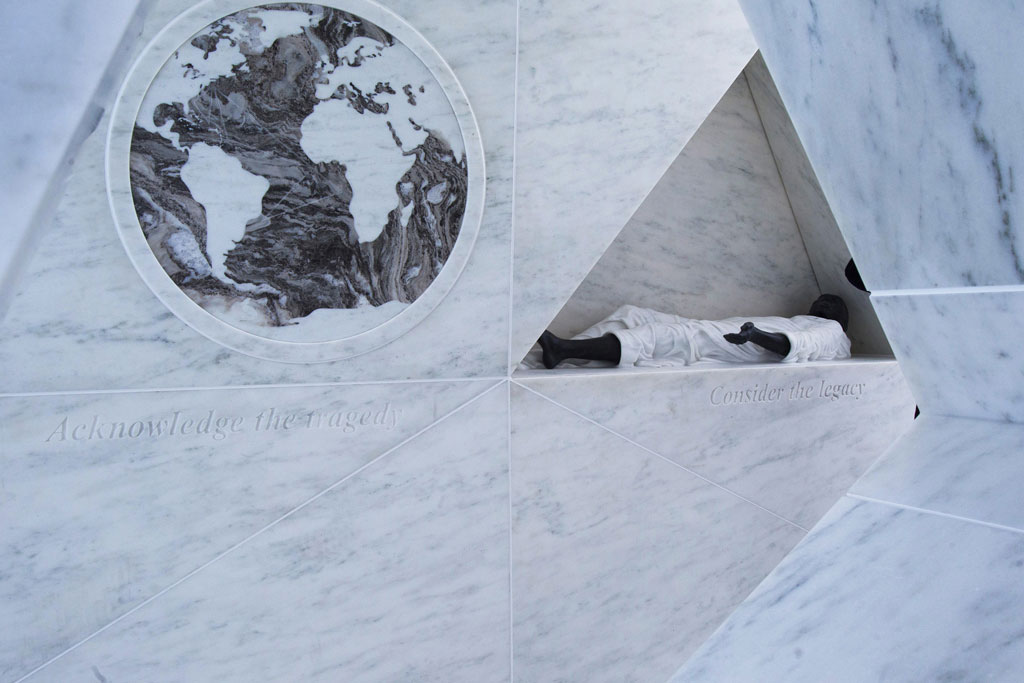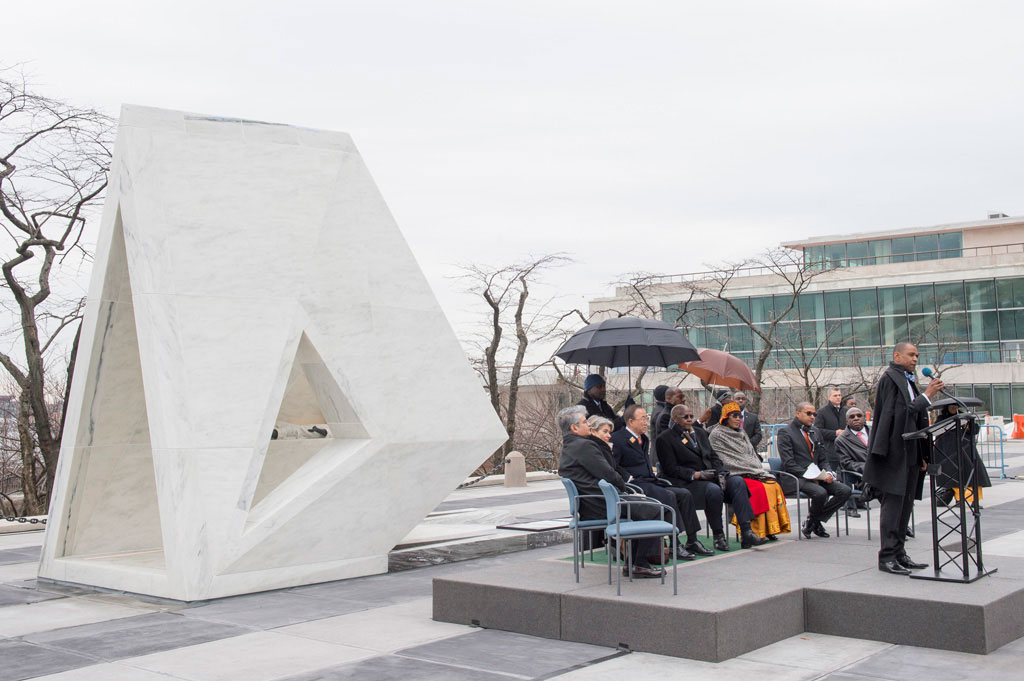Ark of Return: UN erects memorial to victims of transatlantic slave trade
The bravery of millions of victims of the transatlantic slave trade, who suffered unspeakable injustice and finally rose up to end the oppressive practice, was permanently enshrined today as the United Nations unveiled a memorial at its New York headquarters, on the International Day of Remembrance of the Victims of Slavery and the Transatlantic Slave Trade. Entitled the Ark of Return, and designed by American architect Rodney Leon, of Haitian descent, the memorial aims to underscore the tragic legacy of the slave trade, which for over four centuries abused and robbed 15 million Africans of their human rights and dignity, and to inspire the world in the battle against modern forms of slavery, such as forced labour and human trafficking.












